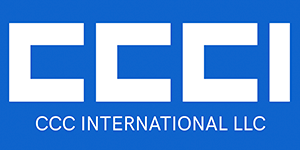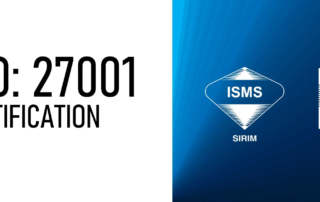The world has seen iconic international movies and TV shows online. Who would forget about how Squid Game became a hit? And, of course, anime has mesmerized viewers everywhere. The worldwide popularity of these productions wouldn’t have been possible without translations and localizations. And for those who aren’t fans of subtitles, dubbing, and voice-over services are always to the rescue.
Why Do You Need Dubbing and Voice Over Services for Video Localization?
Dubbing and voice-over services are present in almost all forms of media production. It touches different industries, providing an immersive experience that cannot be achieved through traditional localization techniques.
For businesses, the services represent an opportunity to reach new markets by localizing their content.

Reducing Cost for Hyper-Localized Global Marketing Strategies

Increasing Brand Awareness

Increasing Organic Traffic
Different Dubbing Styles
Not all projects need the same level of dubbing services. Different industries have different requirements, and CCCI offers a wide range of dubbing services.
?️Lip-Synced Dubbing
Lip-synced dubbing is the most common form of audio dubbing services. Dubbed audio should match the visuals perfectly, requiring precise lip synchronization and audio engineering skills. It’s common in movies, TV series, and video games.
? Pros:
Lip synchronization ensures that the dubbed audio looks natural.
? Cons:
It’s challenging to produce, requiring a lot of time and effort.
?️Phrase-Synced Dubbing
Phrase-synced dubbing is mostly used in matching original and translated audio by phrase. It doesn’t focus on the lip movements of the characters in the video.
? Pros:
The dubbing process is relatively much faster and easier than lip-synced dubbing.
? Cons:
Dubbed audio may not match the visuals as precisely as lip-synced dubbing.
?️Non-Synced Dubbing
Non-synced dubbing is primarily used for audio dubbing services in cartoons and short productions. Dubbed audio does not have to match the visuals, so it’s much easier and faster to produce.
? Pros:
The dubbing process is relatively fast and easy.
? Cons:
Dubbed audio may be less natural-sounding compared to other dubbing services.
Different Voice-Over Styles
Like dubbing, voice-over services also come in various shapes and sizes. Here are some of the most popular types of voice-over services used in media production:
?️UN-Style Voice-Over
UN-style voice-over is the most common type among all voice-over services. Dubbed audio follows a strict style with shorter, punchier sentences. It’s often used in documentaries, news broadcasts, speeches, testimonials, and interviews.
? Pros:
Dubbed audio is consistent and easy to understand.
? Cons:
Dubbed audio may sound too monotonous due to its strict structure.
?️Off-Camera Voice-Over
Off-camera voice-over attempts to simplify a message for the audience, maybe even leading them to reflect further on a subject. It’s like a “voice of God” narration commonly used in films, TV shows, and other media.
? Pros:
Dubbed audio adds an emotional or reflective layer to the visuals.
? Cons:
Dubbed audio may be too overwhelming or overpowering if not used properly.
The Difference Between Voiceover and Dubbing
Dubbing and voice-overs are everywhere, allowing audiences worldwide to access foreign productions in their country’s language. You see it in TV commercials, video games, and films. It’s easy to think that the two are the same, but they have fundamental differences:
? Dubbing requires actors or voice artists to speak a character’s lines in another language, while voice-over involves just the voicing of a script by one voice artist.
? Dubbing completely replaces the existing audio, while voice-over is mostly used to provide narration or background information.
? Dubbing is used for films and TV series, while voice-overs are mainly used in commercials.
Regardless of the differences, dubbing and voice-overs significantly help businesses reach global audiences. And CCCI has the experience and technical ability to provide a multilingual voiceover service for any content.
The Video Dubbing Process
Dubbing and voice-overs aren’t just about translating and getting the script done. It needs a well-designed process to ensure quality results. Here’s an overview of how it works:
?️ Casting
Every project requires unique voices. The same goes for video dubbing services! Working with professional voice actors and artists ensures that the voices match the characters in the production. It would be best if you also considered accents, genders, and ages when casting.
?️ Scriptwriting
Scriptwriting is critical for dubbing and voice-over projects. It involves choosing the best words to use in the script, ensuring it captures the original context of the content. Native speakers should also review dubbing and voice-over scripts to guarantee accuracy.
?️ Translation
The scripts must be translated correctly for dubbing and voice-overs. Translating the work requires a deep understanding of the source and target languages. Localization also plays a vital role in capturing the cultural context of the content.
?️Recording and Dubbing
Voice actors record their lines in a studio for dubbing and voice-overs. It’s essential to double-check the audio to ensure the audio quality is up to par. Dubbing and voice-overs must be done with great care, so it’s best to have experienced audio engineers to monitor the process.
?️Editing and Mixing
Once the source audio and voice-over recordings are done, it’s time to sync them. Dubbing requires careful effort in terms of lip synchronization, making sure that the dubbed audio matches the visuals perfectly. Audio engineers should also mix audio tracks to make them sound natural.
?️ Quality Assessment
Every dubbing and professional video voice-over project demands perfection. Dubbed audio from CCCI goes through a rigorous review and assessment process to ensure they meet the highest standards.
Casting
Every project requires unique voices. The same goes for video dubbing services! Working with professional voice actors and artists ensures that the voices match the characters in the production. It would be best if you also considered accents, genders, and ages when casting.
Scriptwriting
Scriptwriting is critical for dubbing and voice-over projects. It involves choosing the best words to use in the script, ensuring it captures the original context of the content. Native speakers should also review dubbing and voice-over scripts to guarantee accuracy.
Translation
The scripts must be translated correctly for dubbing and voice-overs. Translating the work requires a deep understanding of the source and target languages. Localization also plays a vital role in capturing the cultural context of the content.
Recording and Dubbing
Voice actors record their lines in a studio for dubbing and voice-overs. It’s essential to double-check the audio to ensure the audio quality is up to par. Dubbing and voice-overs must be done with great care, so it’s best to have experienced audio engineers to monitor the process.
Editing and Mixing
Once the source audio and voice-over recordings are done, it’s time to sync them. Dubbing requires careful effort in terms of lip synchronization, making sure that the dubbed audio matches the visuals perfectly. Audio engineers should also mix audio tracks to make them sound natural.
Quality Assessment
Every dubbing and professional video voice-over project demands perfection. Dubbed audio from CCCI goes through a rigorous review and assessment process to ensure they meet the highest standards.
Why you Should Go with CCCI for Voiceover and Dubbing Services
When imagining how that anime will sound with a new dub and how it will touch the lives of its future audiences, know that it takes a professional to help bridge the gap!
?At CCCI, our dubbing and voice-over team comprises experienced professionals from different disciplines. We work with professional voice actors and artists, providing a comprehensive service for all your media production needs.
?CCCI works with multiple studios, audio engineers, and video producers to ensure that our clients get the best experience. Our post-production engineers guarantee that the audio quality is pristine and the audio synchronization is perfect. We also specialize in video post-production and re-editing to ensure your video is ready for distribution.
?Whether you’re producing videos, anime, movies, or TV shows, our professional audio voice-over services, video dubbing services, and video localization services will help you reach your target audience. We’ve completed game voice over services and dubbing, movie dubbing, and video localization for clients worldwide.
At CCCI, we’re committed to providing our clients with
top-notch multilingual voiceover services that meet their needs and exceed their expectations.
Contact us today to get started!

FAQS ABOUT DUBBING AND VOICE-OVER SERVICES
Voice-over is the art of recording audio (or “voice”) and adding it to visuals to create a more dynamic and engaging video. Voice-over is often used in documentaries, commercials, and corporate videos.
Dubbing is replacing the original audio track with a new one. Dubbing usually involves recording voice actors who speak the target language and then syncing the audio with the visuals. Dubbing is commonly used in movies and TV shows.
While dubbing and voice-overs involve recording audio for video, the main difference is that dubbing replaces the original audio track. In contrast, voice-over services involve recording new audio with visuals.
Dubbing and subtitling are critical in translation as they allow media producers to reach a wider international audience. Dubbing ensures that the audio is localized to the target language. At the same time, subtitling allows viewers to access media in their native language. Dubbing and subtitling both help make video content more accessible and engaging.
FEATURED BLOGS
FEATURED BLOGS
Upcoming Anime 2026: Most Awaited Anime Series and Movies
Key Takeaways We have created this guide for anime [...]
Comic Book to Webtoon Conversion
Key Takeaways: Comic books can be traced back to [...]
ISO 27001 Certification
We are excited to announce that CCC International has [...]



